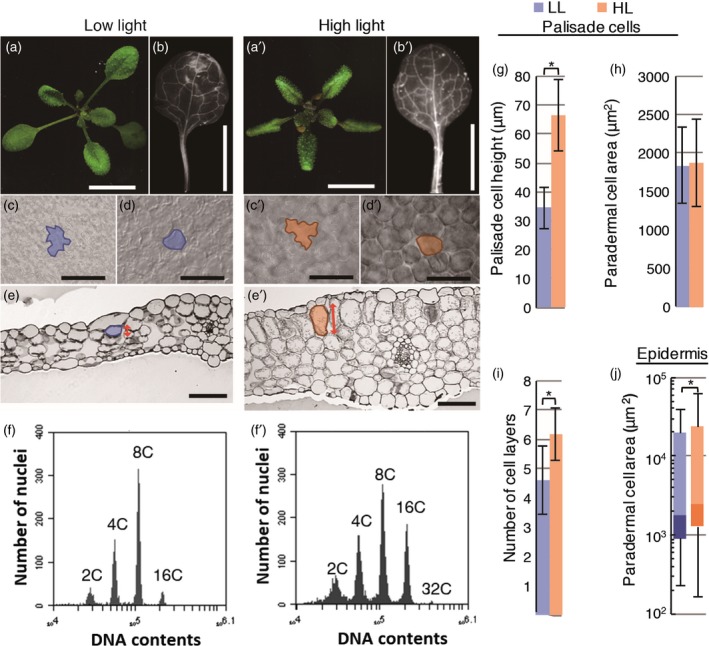Figure 1.

Leaf morphology and ploidy levels of mature sun and shade leaves in wild‐type Arabidopsis. Shade (a–f) and sun leaves (a′–f′) were induced under low and high light conditions for 21 days after sowing (DAS). (a, a′) Rosette morphology. (b–f, b–f′) Matured leaf and cell shape of the first pair of foliage leaves. Paradermal image of adaxial epidermal cells (c, c′) and first layer of palisade cells (d, d′). A typical cell of each leaf type is outlined. Cell area of each cell type obtained from the paradermal images was quantified in (h) and (j). (j) The top and bottom ends of the lines represent the highest and lowest values observed. Upper, middle and bottom of boxes represent 75%, 50% and 25% values of each plot. Quantifications of palisade cell height (g) and number of cell layers in the leaf thickness direction (i) obtained from leaf transverse section (e, e′). (g) Cell height is cell length in dorsoventral direction indicated as a double‐headed arrow in (e) and (e′). Values represent means ± SDs (n = 10 leaves from five plants). Asterisks indicate statistical differences by Student's t‐test (P < 0.0001). (f, f′) Ploidy profiles of the first foliage leaf at 21 DAS. In the ploidy measurement, each sample contained only a single leaf blade. The above result had been replicated in at least three independent experiments. Scale bars: (a–b, a′–b′) 1 cm; (c–e, c′–e′) 100 μm.
